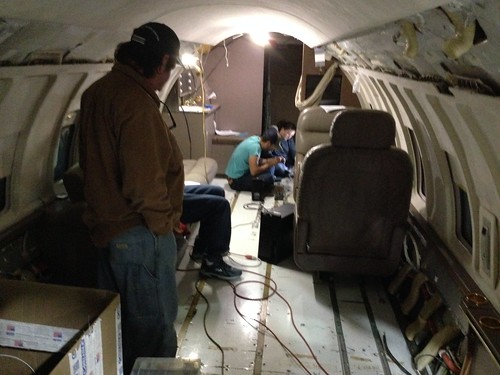The news is full of the most recent Boeing debacle involving the 737 MAX 9 airliner and its door plug that bailed out during flight to land in someone's back yard, leading to sudden cabin depressurization and an emergency landing.
A colleague of mine (Thanks, Jeff!) passed along this interesting and short-ish article on some of the recent history of Boeing, published in The Atlantic about the time of the 737 MAX 8 crashes in 2019 involving the aircraft's Maneuvering Characteristics Augmentation System (MCAS).
Jerry Useem, "The Long Forgotten Flight That Sent Boeing Off Course", The Atlantic, 2019-11-20
The gist:
In 1997, Seattle-based Boeing merges with the much smaller McDonnell Douglas (MCD) in a stock swap. Analysts at the time described it as MCD buying Boeing with the larger company's own money. Surprisingly, the finance-centric (read: MBAs) management of MCD takes over the upper management tiers of Boeing that was previously manned by former engineers. Then, in 2001, the new MCD-based upper management gets tired, apparently, of being questioned by the engineers about cost-cutting and safety concerns, so the entire upper management team moves to new digs in Chicago, 1500 miles away from where the aircraft are built.
WTF?
My favorite jobs over the past four decades plus change have been those in which software, firmware, and hardware product development were closely associated - both culturally and geographically - not just with each other, but also with testing, management, production, and customer support.
My interest in this isn't just from a general product development perspective.
I've had the privilege of having worked on several embedded systems products for the business aviation market, products that could use the term cloud computing in a literal sense. None of those products were flight safety critical. For you aviation geeks, our processes conformed to AS9100, a quality standard, and with DO-178C DAL D, a safety standard, and were tested under DO-160. I even did some hacking with ARINC 429 (an aviation packet bus) and ARINC 717 (an aviation synchronous bus used to log to the aircraft flight data recorder). I got to make the Asterisk open source PBX work with the cockpit two-wire headsets, and with the Inmarsat and Iridium satellite constellations. That job had me crawling around in the equipment bay of a two-engine business jet, and taking short test flights.
(I took these photographs of our Bombardier Challenger 600 test aircraft at Centennial Airport (KAPA) near Denver Colorado.)
I even got to do some product integration at the Gulfstream Aerospace plant in Savannah Georgia, where I may have walked through Oprah Winfrey's new private jet on the assembly line.
It doesn't get much better than that.
Although our business aviation products were certified for DO-178C Design Assurance Level D - the least safety critical level for which the U.S. Federal Aviation Administration requires certification - we had to have our software certified by an FAA Designated Engineering Representative (DER), essentially an FAA licensed contracted inspector. That turned out to be no small thing. From what I've read, the processes for DAL A - flight safety critical - aviation products were like software development processes dialed up past eleven. The amount of scrutiny and testing that every single line of code receives makes you wonder how the MCAS debacle ever happened. Although it's interesting to note that, like many large aviation companies, Boeing had its own DERs on their payroll.
The cautionary tale of the disastrous cultural evolution of Boeing is a remarkable one, from both a safety and a product development point of view.



No comments:
Post a Comment